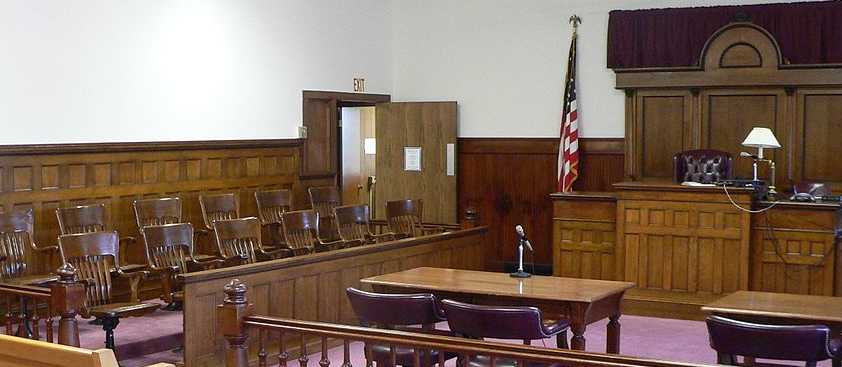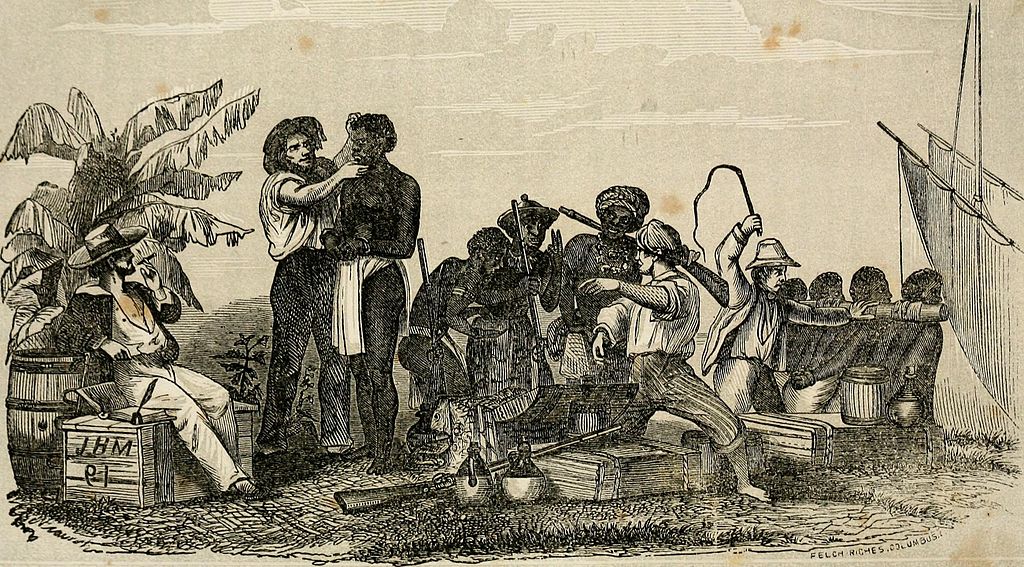How Cumulative Cases Make The Case For Christianity
When making the case for a particular worldview – whether it be Christianity, Judaism, Islam, Hindui,sm or even Atheism – there is certain evidence we see in reality that requires an explanation. The universe is not eternal; it began to exist. But why did it come into existence at all? At some point, life began. How and why? We all have a sense that the world isn’t the way it ought to be. But what is the basis for morality? How do we best explain various historical events? This is our evidence. These are the things we have found at the “crime scene” of reality, and we need to determine which worldview offers the best explanation for this evidence.
Previously, we discussed the nature of evidence and the different types of things we can use to make our case. We discovered that both direct and indirect evidence have equal value. Both eyewitness testimony and circumstantial evidence bear the same weight. As we are about to see, though, cases aren’t usually made based on a single eyewitness’s testimony or the proverbial smoking gun alone. If you want a case to stand up in a courtroom, you have to make the evidence cumulative.
The Case Of The El Camino Killer
Let’s say that in your local metropolitan area, a young woman named Lori was murdered in her home. When the detectives arrived, they noted several things. First, her cause of death appeared to be blunt force trauma to the head with a small item. During their investigation, they found a set of women’s Callaway golf clubs in the garage, and the 5-iron was missing. When they examined the doors and windows, there appeared to be no forced entry. Right next to the body, they found a partial size 11 boot print from a pair of Wolverine boots. And, after talking to neighbors, they reported seeing a dark blue El Camino pull away from the house around the time of death.
Not having a suspect yet, the detectives start canvassing the places where Lori used to frequent. They discovered she used to play golf regularly at a local golf course. After interviewing some people, they found out that the maintenance man drove a dark blue El Camino. Now, El Caminos aren’t rare, but there aren’t many of them around anymore. And certainly not dark blue ones. But just because the guy owns a dark blue El Camino doesn’t make him a killer.
The cops paid the maintenance man, Ron, a visit. In his apartment, they found a woman’s Callaway 5 iron hidden under his bed. And the club smelled like bleach, as if someone tried to clean it. Ron also happened to own a pair of size 11 Wolverine work boots. And, they found a t-shirt that had been soaked in bleach in his trash can. Based on the cumulative evidence, they arrested Ron for the murder of Lori.
The Power of Cumulative Cases
In the theoretical case above, not one piece of evidence could convict Ron on its own. El Caminos aren’t rare. There might be several in any given city. Ron works at a golf course, so it wouldn’t be out of place for him to have clubs at home. And size 11 Wolverines are really common. Put any of these items in front of a jury on their own, and they could not convict Ron. But, put all of these pieces of evidence in front of the court as a group, and either Ron is just really unlucky, or the best explanation for numerous pieces of evidence the investigators have found is that he is the one who killed Lori.
Another thing that helps make the case in front of a jury is having a variety of different types of evidence. Having just physical evidence is great. But when you add on other types like the suspect’s mental state, having the motive, and the opportunity to commit the crime, it makes the case all the more convincing.
Different kinds of evidence also make a stronger case because they can corroborate other evidence. In other words, different types of evidence back up the story that other evidence tells. For example, if a store clerk says he was held up at gunpoint by a suspect, the suspect’s handprint found on the counter doesn’t tell detectives if he had a gun and tried to rob the guy, only that he was in the store like a hundred other people. But if the security camera picked up a suspect with a gun, and showed the suspect put his hand where the detectives found a handprint, those pieces of evidence corroborate the eyewitness testimony of the store clerk. They backed up what he had said.
Possible vs. Reasonable
When jurors are given their instructions, the standard for conviction is beyond a reasonable doubt. They aren’t told beyond a possible doubt because anything is possible. Is it possible that, given enough time, a thousand monkeys with a thousand typewriters might eventually write Hamlet? Sure, it’s possible. But, if you came across a copy of Hamlet on a deserted island, you wouldn’t think a monkey wrote it and put it there; you would think another person must have written it, been there before you, and dropped it. That’s the reasonable explanation.
In our case above, we can come up with a lot of possible explanations for the evidence detectives discovered. It’s possible that the suspect had the victim’s golf club because he was fixing it for her. But why would someone working on a golf club clean it with bleach and then hide it under the bed? Why wouldn’t it be on a workbench or something? It’s possible the suspect went to the house and found the victim already dead. But, then, why didn’t he call for help? And why did he destroy any blood evidence with bleach?
See, we can find individual possibilities for the evidence we have discovered to try and explain away individual details. This would make the suspect just some incredibly unlucky person. But it’s not the reasonable conclusion. The reasonable conclusion is that he did it.
Every Case Has Unanswered Questions
When murder cases go to trial, the prosecution will attempt to answer several questions to get to “who done it”. Who is the victim? Where is the body? How did the victim die? Why did the victim die? When was the murder committed? Can the suspect be put in the right place at the right time to commit the murder?
The more of these questions that get answered, the better. But not all questions need to be answered before the jury can come to a conclusion. If we think of a picture puzzle, we can usually have some missing pieces and still figure out what the picture is. Murderers can still be found guilty without a body or a motive. Not all of the questions need to be answered before the jury can come to a conclusion.
Juries Are Made From Common People
You don’t have to be an expert or have special education in order to be a juror. Juries are common people from all walks of life – grandmas, plumbers, mail carriers, garbage collectors – and they are more than capable of reviewing the facts in a case to determine a verdict. Common sense goes a long way. In fact, the California jury instructions tell the jurors to use their common sense when deciding if someone’s testimony is true or false. Jurors don’t need a high level of education to qualify as jurors. That would completely defeat the idea of how juries are formed.
The Cumulative Case For Christianity
There is no single argument/fact/piece of evidence that proves Christianity to be true. For example, many atheists believe that we get morality from ideals we have developed over millions of years of existence that help perpetuate the species. The theistic argument says that objective moral law has to come from an objective lawgiver outside of humanity. But, other pieces of evidence help us form the picture of our “suspect”. Can the same world view explain why we have objective moral laws and also how and why the universe came into existence from nothing? And why life exists? And historical events like the life of Jesus of Nazareth? You have to examine ALL of the evidence and come to a conclusion.
The conclusions we come to based on our evidence also have to be reasonable. Is it more reasonable to think that the universe came into existence via an independent cause or that it somehow created itself? Is it more reasonable to think that some proteins came together in a puddle of mud and somehow randomly formed the most complicated and information-packed bundle of code ever developed (DNA)? Or is it more reasonable to think that information as voluminous and complex as DNA requires intelligence to create it? Is it more reasonable to believe that over 500 people had group hallucinations of Jesus of Nazareth after he died or that they saw a living, breathing person? Remember, anything is possible. But we need to get behind what is most reasonable.
The case for Christianity also contains different types of evidence that help to corroborate what the other pieces tell us. We find cosmological, biological, historical, and other types that tend to back each other up and bring the picture of reality into better focus.
While trying to put together the picture puzzle of reality, we may not have all the pieces. We may not get all of our questions answered. We don’t need to wait for all the pieces to fit into place. If we’ve lost the puzzle piece that adds more leaves to the tree in our picture, we can clearly see that the thing in the picture is a tree without having to have more leaves on it. In the same way, we can make a decision with the evidence that we have on why things are the way they are. We can (and should) keep striving for a deeper understanding of the universe around us. But we don’t need to have every scientific riddle solved before we can come to a reasonable conclusion about reality.
Finally, every day people like you and I are completely capable of being jurors in this case. We don’t need to have multiple degrees and wear lab coats. We can learn the fundamentals of various topics and gain enough knowledge to come to a conclusion. Also, our common sense can take us a long way. If we are walking in the woods, and we come across a baseball cap, common sense tells us that it has an explanation for why it is there, and it probably didn’t grow out of the ground. We don’t need to understand the baseball cap manufacturing process in order to come to that conclusion.
As we examine the evidence for reality, we will see that there is no one “smoking gun” in this case. But we can look at the evidence collectively and come to a reasonable conclusion on who our “suspect” is. We may not get all of our questions answered. We may not understand the motive behind what happened. But, every one of us can sit on the jury – NEEDS to sit on the jury – and come to a reasonable verdict on why things are the way they are.
Share This Story, Choose Your Platform!
latest video
news via inbox
Nulla turp dis cursus. Integer liberos euismod pretium faucibua







